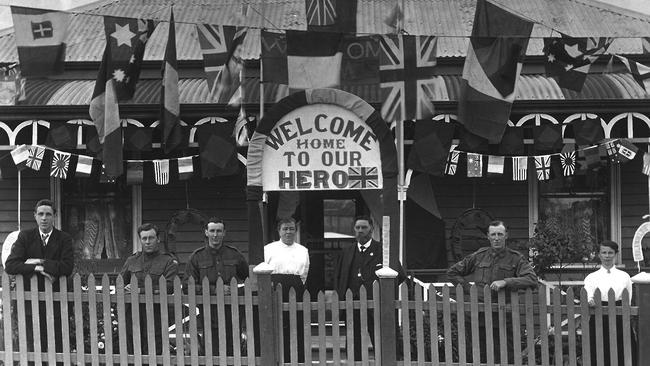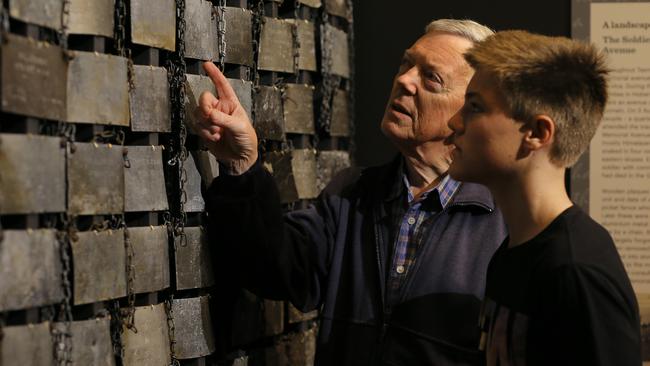Tensions on the homefront
SOLDIERS risked their lives overseas as families at home endured their own private hell, writes ANNE MATHER

ANZAC Centenary
Don't miss out on the headlines from ANZAC Centenary. Followed categories will be added to My News.
WHILE Tasmanians abroad faced war first-hand, those on the home front faced another form of hell.
The anxious wait for news about their loved ones was a form of trauma in itself.
The grim wait is summed up in a 1915 letter from Hobart father John Burge, which is the centrepiece of an exhibition at the Tasmanian Museum and Art Gallery.
“The suspense is awful,” wrote Mr Burge, pleading for information about the fate of his son Stan, whom he feared had died at Gallipoli.
The line, “The Suspense is Awful,” has been borrowed for the title of the TMAG exhibition on the Great War.

Exhibition curator Ian Terry said it was sometimes weeks before those at home knew whether their loved ones were alive or dead.
And, for many, the long-awaited news brought only grief — with almost 3000 Tasmanians dying during the four years of World War I.
“They coped by building war memorials. That was the community’s way of expressing the grief and trauma of it all,” said Mr Terry, TMAG’s senior curator of history.
One of the main memorials in Hobart was the Soldiers Memorial Avenue in the Domain, where widows, grieving mothers and other loved ones planted 520 trees in honour of the fallen.
They also held huge parades through the city streets, with patriotic flags waving to farewell troops marching off to war or welcome home the wounded.
Many families coped with the grief and anxious wait by staying busy. They knitted socks for soldiers, sent food parcels and raised funds.
If a man came back with no legs, no hands or no face, they were often looked after by their ageing parents,” Mr Watson said. “And those parents must have suffered.
Tasmanians also busied themselves in the kitchen, making Anzac biscuits and jam to send overseas in food parcels. They included tinned delicacies such as corned beef, boiled mutton and condensed milk.
Mr Terry said the sale of patriotic war “buttons”, to raise money for soldiers, was another way many at home found their own form of war service.
The war caused such pain and suffering for some that they never recovered.
Historian Steph Burbury, who is researching the stories of the WWI soldiers who served from the Oatlands district, said one woman whose fiance died in action spent the rest of her life in the New Norfolk Asylum.
Even when loved ones did return, relief did not always follow.
Hospitals were set up by the Red Cross across the state for soldiers who returned wounded. Roseneath at Austins Ferry was one of them.
Historian Reg Watson said the Red Cross did a remarkable job rehabilitating soldiers, but families also carried the burden.
Without a modern welfare system, families were often required to support and care for injured loved ones.
“If a man came back with no legs, no hands or no face, they were often looked after by their ageing parents,” Mr Watson said. “And those parents must have suffered.”
Originally published as Tensions on the homefront


